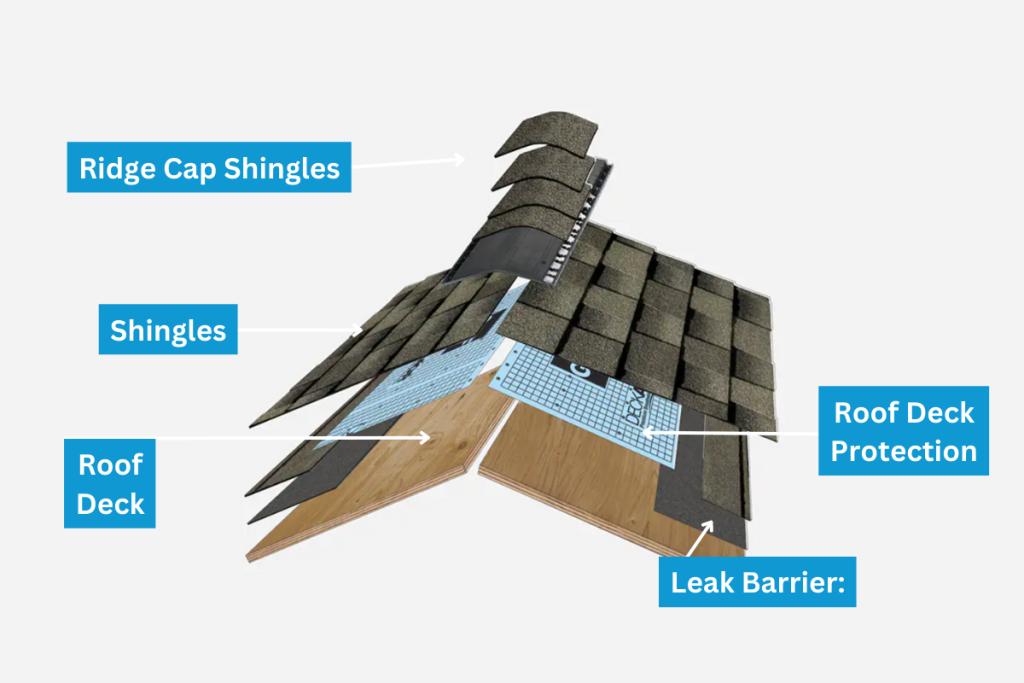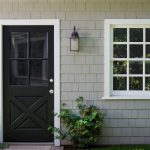Are you concerned that something is wrong with your roof, but you’re not exactly sure which parts are showing wear and tear? Roofs can vary in design and complexity, making it challenging for homeowners to determine the issue. We’re here to help!
We’ve outlined the different parts of a roof, exploring their functions and highlighting why they matter. This information can help you keep an eye on the health of your roof, and determine when to reach out to a professional for repairs or replacements.
Here are some common components found in many residential roofing systems:
Drip Edge: A metal flashing, or other overhanging component, with an outward projecting lower edge, intended to control the direction of dripping water and help protect underlying building components.
Downspouts: These pipes are attached to gutters to carry the rainwater from the gutters to the ground.
Eaves: These are the lower edges of the roof that overhang the home’s walls.
Fascia: This is the board running along the edge of the roof, to which gutters are typically attached.
Flashing: These thin strips of metal are installed around roof features like chimneys, skylights, and vents, as well as in the roof’s valleys, to direct water away from these areas and prevent leaks.
Gutters: These channels, attached to the fascia, direct rainwater away from the home to prevent water damage.
Hip: The external angle formed by the intersection of two sloping roof planes, running from the ridge to the eaves.
Leak Barrier: A self-sealing underlayment that helps prevent leaks caused by wind-driven rain and ice dams.
Image Source: GAF
Ridge: The top peak of the roof where two slopes meet.
Ridge Cap Shingles: Thicker, pre-bent shingles that are added to help defend against leaks at the hips and ridges.
Ridge Vents: These vents are located at the peak of the roof and allow warm, humid air to escape from the attic.
Roof Deck: This is the base layer upon which everything else is attached, usually made of plywood or another type of wood. A protective layer can be added here to help shield it from moisture.
Shingles: These are the exterior layer of a roof that you see from the street. Shingles can be made from a variety of materials, including asphalt, wood, metal, tile, and slate.
Soffit Vents: Found under the roof’s overhang, soffit vents allow fresh air into the attic, balancing the air temperature inside with the outside.
Trusses or Rafters: These are the structural elements that give the roof its shape.
Underlayment: This is a protective layer installed under the shingles that provides additional water protection.
Valley: The internal angle formed by the intersection of two sloping roof planes.
Choosing to replace your roof is a big decision, but it doesn’t have to be a stressful one. Here are some signs that it’s time for a roof replacement.
If you’re ready to take the first step, request a quote. We promise to be there every step of the way, delivering the quality, value, and peace of mind you deserve.







Your blog post on understanding the different components of a roof is incredibly helpful. It’s often challenging for homeowners to pinpoint issues with their roofs, especially when they’re not familiar with the various parts and their functions. Your breakdown of these components is truly informative.
I appreciate how you’ve outlined each element’s purpose, from the drip edge to the leak barrier. It’s eye-opening to learn about the role that seemingly small details like flashing and eaves play in maintaining the overall health of a roof. The explanations are clear and concise, making it easier for anyone to understand, regardless of their level of expertise.
Your post empowers homeowners to take a more proactive role in roof maintenance. Knowing what to look for and why it matters can make a world of difference in identifying potential issues before they escalate. It’s great to see a resource that bridges the gap between professionals and homeowners, making the topic accessible to everyone.
Thanks for sharing this valuable information. It’s a wonderful resource for anyone looking to better understand their roof and keep it in top condition. Looking forward to more insightful content from you!